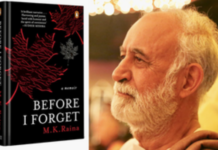By Vikas Datta
Think of the Middle East now and a representative image would be a vicious group with obscurantist goals to be obtained with indiscriminate and unconscionable violence, but it was different some decades ago. The standard then was an iconic and genuinely popular ruler (even if he came to power by revolution) exemplifying hope and dignity, not fear, for his own countrymen and the region – but was still suspected and reviled by the West.

Gamal Abdel Nasser (1918-70), a colonel when his Free Officers deposed the king to make Egypt a republic in 1952, championed social justice, unity, modernisation, and anti-imperialism, inspired a cultural revival, and was always accessible. He made mistakes too, like leading his country into a ruinous war in 1967, subsequently seen as root of the Middle East’s problems – but to be fair, it was one he never wanted.
Times and ideals change, and the legacy of Nasser, whose 98th birth anniversary was on January 15, was long-sought to be discredited but has endured. During the Arab Spring, protesters not only in Cairo but in other capitals too brandished his pictures.
But offering much inspiration, he never figured much in fiction, like contemporaries Eisenhower, Kennedy, Khrushchev, De Gaulle, or Che Guevara – whom he warned not to “become Tarzan, a white man among black men, leading, protecting them” when Che wanted to join the Congolese rebels.
Outside Egyptian authors, Nasser figures only in four works – two mere mentions, like Frederick Forsyth’s “The Odessa File”, and one Marc Sleen’s long-running Belgian satirical comic strip, “Nero” (1947-2002), which often referred to real-life news events and featured many contemporary leaders.
In “De Brief Aan Nasser” (1956), Nero, an unemployed man content to remain on his sofa reading a newspaper but drawn by friends into many global adventures, has to give him a letter and hands it over personally. Nasser opens it to see a drawing of a man sticking out his tongue, but Nero and his friends escaped. In the end, Nero receives a reply from Nasser – a similar drawing!
There is however a significant cameo in the penultimate volume of the unjustifiably-neglected David Fiddimore’s Charlie Bassett series, chronicling the British Empire’s inglorious retreat in the 1950s. “Silent War” (2010), set in the Suez Canal Zone in 1953, sees our hero encounter him in a night-time visit to an ancient ruin in the desert.
“The man standing low in the stage area didn’t dazzle me at all. In fact he looked rather annoyed to see me… As I turned away, he spoke. ‘Do not go, English soldier’. He spoke conversationally, and in a cultured deep voice.”
Summoned to him, Bassett finds “the man I finished facing up was taller, broader and a bit older than me. He had a black lip-liner moustache and black hair like his minders. He was handsome in a Clark Gable sort of way..” He identifies himself as Gamal, says he’s a colonel and displays a sense of humour.
Explaining his presence, he says: “I come out here sometimes – with a bodyguard alas. We can no longer move freely in our own country because of you. I come out here when I want to think. When I have difficult decisions to make.” After a short discussion, he asks Bassett if he will reveal the meeting and, as he admits he will tell his sons, says they may have saved his life but “never come back to my country in uniform again..”
He refuses to shake hands as they part. “No. I am sorry. Not while you occupy my country…”
Though set in the Cyprus of 1956 , “A Blind Man’s War” (2011) mentions the Suez crisis and Bassett, recalling his meeting with Nasser “by accident”, admits he was “canny enough to have provoked us into it”.
Egyptian writers have been critical, be it Waguih Ghali’s semi-autobiographical “Beer in the Snooker Club” (1964), Sonallah Ibrahim’s “Zaat” (1992) and Mohamed Mansi Qandeel’s “Moon over Samarqand” (2009), but Nobel laureate Naguib Mahfouz is balanced.
Nasser appears in his “Fear” short stories as a powerful unnamed army officer who defeats the gangsters controlling society to take sole power and in “Seventh Heaven”, as well as the historical tableau “Before The Throne”, where Egyptian leaders down to Anwar El Sadat defend their actions before a divine court – and their predecessors.
Goddess Isis seeks to balance Nasser’s “magnificent accomplishments” with indefensible faults. But Osiris, the judge, extolling him for being the first native-born Egyptian to rule and work for the labouring people’s welfare, says: “Certainly, few have performed so many services to their country as you have for yours, nor brought down so many evils upon it as you have..” and “any judgment would require long and difficult consideration”.
That seems a fair estimation.














